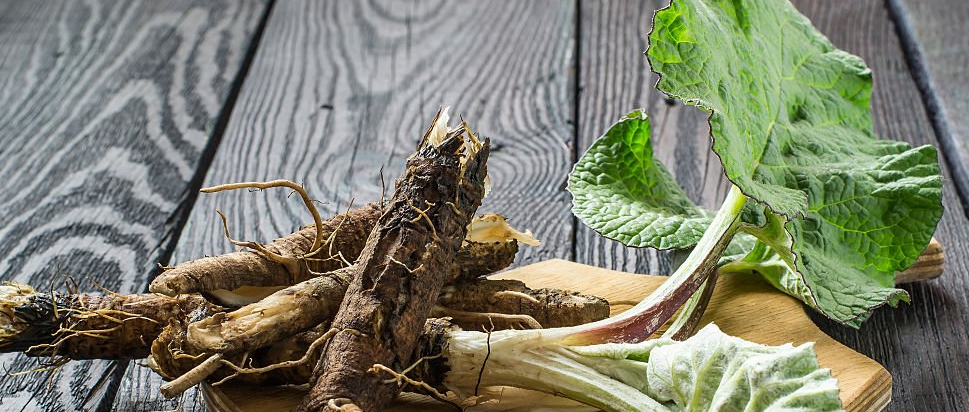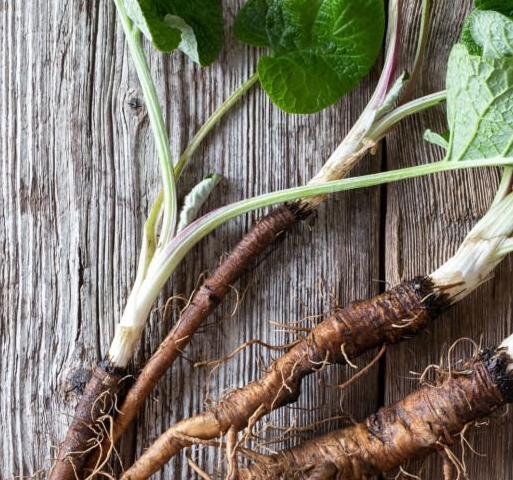As fall gives way to winter, one of the most valuable wild edibles to seek out is burdock root (Arctium lappa). Found across the U.S., this hardy plant is known for its culinary and medicinal uses. In this guide, we’ll explore the joy of foraging for burdock root, ways to use it, proper storage, and some important cautions. Before you head out, always ensure proper identification to avoid any dangerous lookalikes.

How to Identify Burdock Root
When looking for burdock root, it’s important to recognize its distinct features:
- Leaves: In the first year, burdock grows a rosette of large, heart-shaped leaves with wavy edges. The dark green tops contrast with the whitish, woolly undersides.
- Stems: By its second year, burdock sends up tall, hollow stems, but during the first year, the plant stays closer to the ground.
- Burrs: Burdock’s sticky burrs appear in its second year, so if you see these, the root is no longer ideal for harvesting.
- Roots: Burdock roots grow deep and are typically up to 2 feet long. They have a brown exterior and white, starchy flesh inside.
Tip: Bring a shovel when foraging burdock root, as its deep taproots are difficult to extract by hand.
Uses for Burdock Root
Once you’ve identified and dug up your burdock root, it’s time to put it to use!
- Cooking: Burdock root has a crisp texture and mild, earthy flavor. It’s commonly used in stir-fries, soups, and stews. Thin slices work well roasted or sautéed.
- Cooking with burdock root is a delicious way to tap into the flavors of wild foraging. The root has a mild, earthy taste, somewhat similar to parsnip or artichoke, and it’s incredibly versatile in the kitchen. One of my favorite ways to prepare burdock root is by simply roasting it. After cleaning and peeling the root, I slice it thin and roast it with olive oil, salt, and a sprinkle of herbs. This brings out a rich, nutty flavor that pairs beautifully with roasted vegetables or meats.
- For a more traditional approach, you can also try adding burdock root to soups and stews. The root holds up well during slow cooking, absorbing flavors while adding its own subtle earthiness. In Japanese cuisine, burdock (known as gobo) is often used in stir-fries and braised dishes, where its slight crispness adds a wonderful texture. If you want to try something new, you could make burdock root chips by thinly slicing the root and frying or baking until crispy. They make for a nutritious, crunchy snack!
- Medicinal: Traditionally, burdock has been used to support liver health and detoxification. Burdock root tea is also popular for its potential benefits for skin and digestion.
How to Store Burdock Root
Proper storage ensures you can enjoy your foraged burdock root throughout the season.
- Fresh: Wrap the root in a damp cloth and refrigerate it for up to two weeks.
- Dehydrated: Thinly slice and dry the root in a dehydrator or oven on low heat. Store the dried slices in an airtight container.
- Frozen: Peel, slice, blanch, and freeze burdock for long-term storage.
Cautions When Foraging Burdock Root
When collecting burdock root, take these precautions:
- Lookalikes: Burdock can be mistaken for toxic plants like belladonna and hemlock. Always verify burdock’s woolly leaves and deep roots to avoid dangerous mistakes.
- Soil Contamination: Burdock often grows in disturbed soils. Harvest from clean, wild areas, avoiding roadside or industrial sites.
- Allergies: Although rare, some people may have allergic reactions to burdock. Test a small amount before consuming in larger quantities.
foraging for burdock root in the late fall and early winter offers a rewarding way to connect with nature and harvest a valuable wild edible. Its rich culinary and medicinal history makes burdock root a must-try for foragers and home cooks alike. Whether you’re roasting it, adding it to soups, or using it in traditional remedies, this hardy plant can be a delicious and nutritious addition to your foraged finds. Just remember to properly identify the plant to avoid any lookalikes, and store your burdock root well to enjoy its benefits throughout the colder months.
For those new to foraging, start small, familiarize yourself with burdock’s characteristics, and always forage sustainably. By incorporating burdock root into your kitchen, you’re not only enhancing your meals but also continuing an age-old tradition of wild food gathering.
Disclaimer: Ensure Proper Identification
Before consuming any wild plant, proper identification is essential. Foraging burdock root can be rewarding, but confusing it with harmful lookalikes can be dangerous. Use reliable field guides and consult experienced foragers when needed.
